Search
-
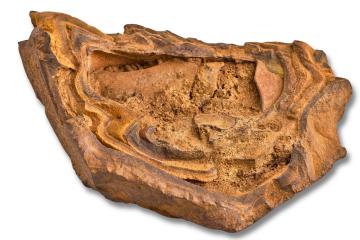 ©
NMAG
©
NMAG
Ironstone
Northamptonshire’s ironstone was formed from iron-rich sediments in the Jurassic period. Quarried since Roman times, ironstone has shaped our landscape, fuelled the county's industry and built our houses.
175 million years ago Geologic to Prehistoric
-
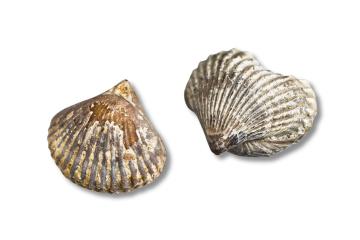 ©
NMAG
©
NMAG
Jurassic Fossil Kallirhynchia sharpi
168 million years ago, Northamptonshire lay beneath a warm sea teeming with marine life, including this fossil brachiopod Kallirhynchia sharpi.
168 million years ago Geologic to Prehistoric
-
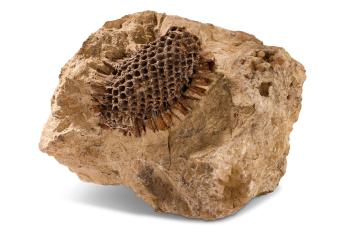 ©
NMAG
©
NMAG
Screw Pine Fossil
This screw pine fossil is a rare type specimen. Parts of Jurassic Northamptonshire were submerged in a shallow warm sea and tropical plants thrived on the nearby land.
168 million years ago Geologic to Prehistoric
-
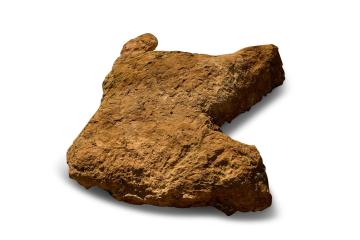 ©
NMAG
©
NMAG
Dinosaur Footprint
This 166-million-year-old dinosaur footprint cast, found in Irchester, is Northamptonshire’s first dinosaur evidence, likely made by a Megalosaurus
166 million years ago Geologic to Prehistoric
-
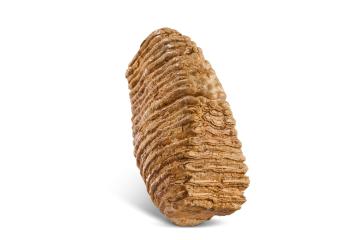 ©
NMAG
©
NMAG
Mammoth Tooth
This tooth belonged to a woolly mammoth that roamed Northamptonshire during the Great Ice Age as recently as 11,700 years ago.
Up to 11,700 years ago Geologic to Prehistoric
-
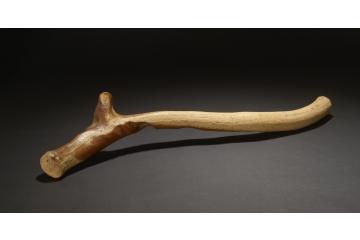 ©
The Trustees of the British Museum
©
The Trustees of the British Museum
Palaeolithic Lyngby Axe
The only example of a Lyngby axe found in Britain, this multi-purpose tool was used by people in the Upper Palaeolithic (Old Stone Age).
Upper Palaeolithic c. 10,000 years ago Geologic to Prehistoric
-
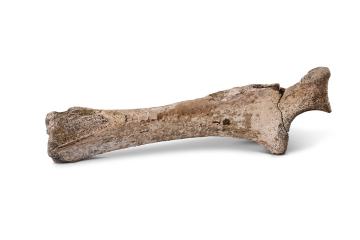 ©
NMAG
©
NMAG
Woolly Rhinoceros Bone
This ulna (leg bone) comes from a woolly rhinocerus that lived in Northamptonshire during the Pliocene and Pleistocene ice Age.
Between 50,000 and 12,000 years ago Geologic to Prehistoric
-
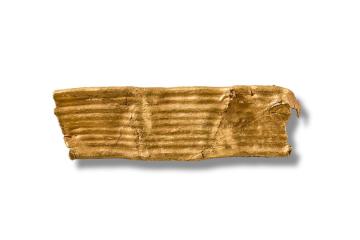 ©
NMAG
©
NMAG
Early Bronze Age Ribbon
A short piece of decorated gold strip or ribbon dating to the Bronze Age.
Early Bronze Age Geologic to Prehistoric
-
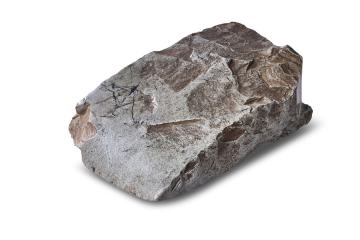 ©
NMAG
©
NMAG
Neolithic Adze
With the start of Neolithic farming came new stone tools. This adze is of a type and stone more commonly found in Denmark.
Neolithic 4,100 - 2,500 BCE Geologic to Prehistoric
-
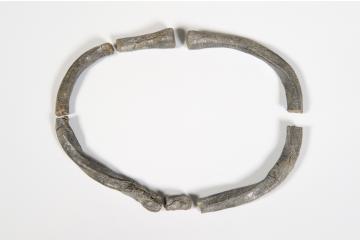 ©
NMAG
©
NMAG
Iron Age Torc
Lead torc worn around the neck of an Iron Age woman. Found during excavation of a rare human Iron Age burial.
Iron Age 800 BCE - 43 AD Geologic to Prehistoric
-
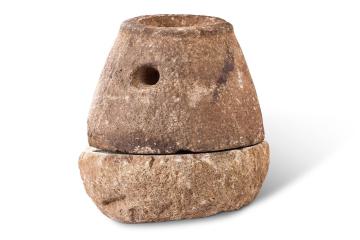 ©
NMAG
©
NMAG
Iron Age Rotary Quern
Rotary quern made from millstone grit used to grind cereals into flour. More than 100 were found at the Iron Age hillfort at Hunsbury Hill.
Iron Age c. 200 BCE Geologic to Prehistoric
-
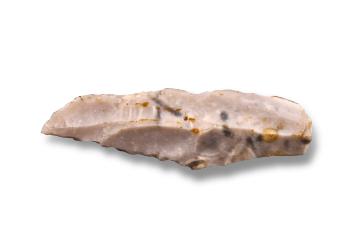 ©
NMAG
©
NMAG
Mesolithic Flint Microlith
Flint microlith - small stone tool made and used by nomadic hunters gatherers living in the Nene Valley during the Middle Stone Age.
Mesolithic c. 9600 - 4000 BCE Geologic to Prehistoric
-
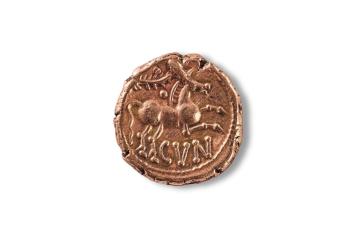 ©
NMAG
©
NMAG
Cunobelin Stater
A Celtic gold stater minted in the late Iron Age, bearing the name of Cunobelin, ruler of the Catuvellauni and Trinovantes tribes.
Iron Age 10 - 40 CE Geologic to Prehistoric
-
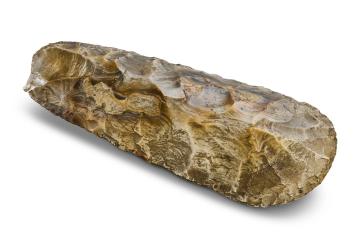 ©
NMAG
©
NMAG
Thorpe (Neolithic) Axe
The Thorpe axe, named after the finder of the Axe in the inter-war years, is a large neolithic flint axe found in Higham Ferrers.
Neolithic 4,100 - 2,500 BCE Geologic to Prehistoric
-
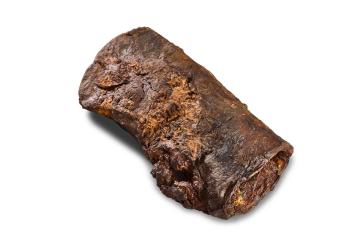 ©
NMAG
©
NMAG
Iron Age Axe Head
A socketed axe made by casting iron in a mould. It probably reflects the transition from bronze to iron metalworking in the early Iron Age.
Iron Age 800 - 43 CE Geologic to Prehistoric
